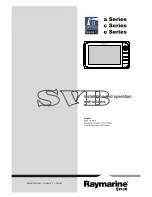
Troubleshooting
HPLC System Troubleshooting _____________________________________________________________
HPLC System Troubleshooting
This is a general guide to HPLC system troubleshooting. For system-
specific problems, consult the manufacturer’s manual. This section gives
advice on appropriate LC conditions and rectifying LC system problems.
Buffers and Additives
In many cases, buffers and/or other additives are necessary in the mobile
phase to modify chromatography. The concentration of buffer/additive
added is critical, as the MS performance can be affected. An example of this
is the addition of acid in negative ion mode. This will suppress ionization of
weakly acidic compounds. Refer to the chapter
LC/MS and the Cone
Wash
for information on specific solvents and additives.
Mobile Phase Reservoir
The mobile phase reservoir should be an inert container, usually glass, fitted
with a vented cap to keep particulate matter from entering. The white frit
serves as a gross filter only; always use a 0.45 µm filter in-line to prevent
solid particles from entering the MS detector.
Bubble Problems and Degassing
Bubble problems in LC systems result from mixing air-saturated solvents.
Air is generally less soluble in solvent mixtures than in pure solvents, and
the excess gas leaves the solution as bubbles. Bubbles in the LC system can
cause instability in UV and other detectors, and in API sources.
Thorough degassing can minimize bubble problems in the mobile phase.
Heating is the most efficient way of removing gas from reversed-phase
solvents, but this is inconvenient. The most common way of degassing
solvents is using a vacuum membrane degasser. Many LC systems have this
feature. Another efficient way to degas solvents is by helium sparging. Use
a flow of ~ 300 mL/min for 3 to 4 minutes and then reduce the flow to a
trickle (most LC systems allow constant helium sparging). One liter of
helium can degas one liter of solvent with ~99% efficiency. To minimize
evaporation of mobile phase and potential change in composition, only
sparge for a few minutes at high flow. Degassing in an ultrasonic bath is a
poor technique for removal of gas from solvents. Normal-phase solvents do
not need to be degassed.
6-4
___________________________ MSQ Hardware Manual ____________________________
















































